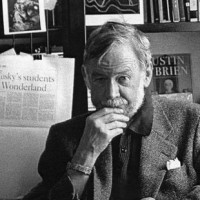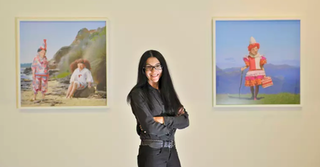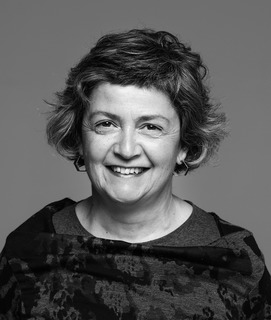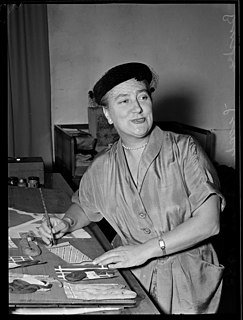
RMIT University, officially the Royal Melbourne Institute of Technology (RMIT), is a public research university in Melbourne, Australia.
Godwin Bradbeer is a New Zealand-born artist now living and working in Melbourne, Australia. Bradbeer is known for large-scale figurative drawing and has been exhibited internationally since the 1970s. He has taught at the University of Melbourne, the Victorian College of the Arts, Monash University, and other art schools in Australia and Asia. From 2005 to 2010, he was head of drawing of the School of Art at RMIT University in Melbourne.

Dr Norman Kingwell Day is an architect, educator, and writer.

Peter Russell Corrigan was an Australian architect and was involved in the completion of works in stage and set design.
John Wardle is a Melbourne-based architect. He graduated from the Royal Melbourne Institute of Technology with a degree in Architecture.

Daryl Sanders Jackson AO is an Australian architect and the owner of an international architecture firm, Jackson Architecture. Jackson also became the associate professor of the University of Melbourne and Deakin University.

Storey Hall, located at 342–344 Swanston Street in Melbourne, Australia, is part of the RMIT City campus of the Royal Melbourne Institute of Technology. It consists of a grand meeting hall constructed in 1887, extended and renovated in 1996, providing a large upper hall, the lower hall as home to RMIT Gallery First Site, and a range of lecture theatres and seminar rooms.

RMIT Gallery is an Australian public art gallery located in Melbourne, Victoria. It is the main art gallery of the Royal Melbourne Institute of Technology (RMIT).
John Gollings AM, is an Australian architectural photographer working in the Asia Pacific region.

Polixeni Papapetrou was an Australian photographer noted for her themed photo series about people's identities. Photo series she has made include Elvis Presley fans, Marilyn Monroe impersonators, drag queens, wrestlers and bodybuilders and the recreation of photographs by Lewis Carroll, using her daughter as a model.

The RMIT Design Hub is a design hub that houses research, archive, exhibition and studio space of the Royal Melbourne Institute of Technology in Melbourne, Australia.
Searle X Waldron is an Australian architecture firm based in St Kilda, Melbourne. It is an emerging firm co-founded by Nick Searle and Suzannah Waldron in 2007. The firm focuses on projects ranging from small scale residential to larger scale urban master-planning. Some of their notable projects and design competitions include the MoCAPE and Art Gallery of Ballarat Annexe which have managed to attain various awards from the Australian Institute of Architects, including the 2012 Colorbond Award for Steel Architecture and 2012 Architecture Award for Public Architecture Alteration & Additions. Their designs have been exhibited across Australia and throughout Asia and Europe.

Natasha Johns-Messenger is an Australian conceptual artist and filmmaker, who has lived and worked in New York and Melbourne. Johns-Messenger is best known for her large-scale site-determined installations that examine spatial perception and light. Her work is a complex process of imitation, illusion and trickery, often activated by architectural interventions and optical physics.

Eli Giannini is an Australian architect and director of MGS Architects in Melbourne. Giannini completed her architectural undergraduate studies at RMIT University in 1983 and Master of Design (Thesis) in 1903, entitled ‘Metro-scape’. Soon after her undergraduate studies in 1989, she joined MGS Architects with Robert McGauran and Mun Soon. In 2002 she was selected as President of the Victorian Chapter of the Australian Institute of Architects, a position occupied until 2004.
Jillian Meredith Garner is an Australian architect. She is a principal of Garner Davis Architects and in 2015 became the Victorian Government Architect.
Harriet Edquist is an Australian curator, and Professor of Architectural History in the School of Architecture and Design at RMIT University in Melbourne. Born and educated in Melbourne, she has both published widely on and created numerous exhibitions in the field of Australian architecture, art and design history. She also contributes to the production of Australian architectural knowledge as editor of the RMIT Design Archives Journal and is a member of the Design Research Institute at RMIT University.
Ilka Jane White is an Australian artist. Her practice spans projects in textiles, drawing, sculpture and installation, art-in-community and cross disciplinary collaboration. Direct engagement with the natural world is central to White’s making process. Her current work explores relationships between the mind, body, time and place, and questions the separation of these elements.
Flavia Sparacino is an American-based space maker and scientist. She is currently CEO/Founder of Sensing Places, a MIT Media Lab spinoff that specializes in immersive space design and technology.

Dr Frances Mary Burke was an Australian artist. She holds a significant place in the development of Australian design and evolution of printed textile design in Australia. She is recognised not only as a textile designer, but also as a design activist, homeware retailer, manufacturer and business woman.
Simone LeAmon is an Australian designer, artist and curator. LeAmon is currently the inaugural Hugh D.T Williamson Curator of Contemporary Design and Architecture at the National Gallery of Victoria, Melbourne and an Adjunct Professor, Design and Social Context, RMIT University.











